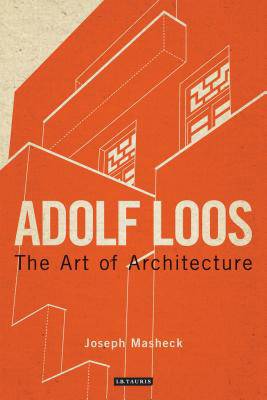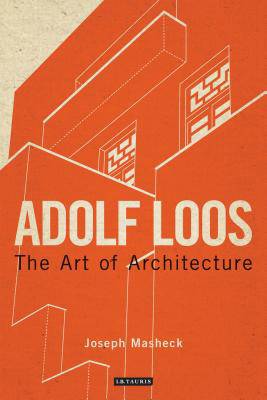
- Afhalen na 1 uur in een winkel met voorraad
- Gratis thuislevering in België vanaf € 30
- Ruim aanbod met 7 miljoen producten
- Afhalen na 1 uur in een winkel met voorraad
- Gratis thuislevering in België vanaf € 30
- Ruim aanbod met 7 miljoen producten
Zoeken
Omschrijving
Widely regarded as one of the most significant prophets of modern architecture, Adolf Loos was a star in his own time. His work was emblematic of the turn-of-the-century generation that was torn between the traditional culture of the nineteenth century and the innovative modernism of the twentieth. His essay 'Ornament and Crime' equated superfluous ornament and 'decorative arts' with underclass tattooing in an attempt to tell modern Europeans that they should know better. But the negation of ornament was supposed to reveal, not negate, good style; and an incorrigible ironist has been taken too literally in denying architecture as a fine art. Without normalizing his edgy radicality, Masheck argues that Loos's masterful "astylistic architecture" was an appreciation of tradition and utility and not, as most architectural historians have argued, a mere repudiation of the florid style of the Vienna Secession. Masheck has reads Loos as a witty, ironic rhetorician who has all too often been taken at face value. Far from being the anti-architect of the modern era, Masheck's Loos is 'an unruly yet integrally canonical artist-architect'.
He believed in culture, comfort, intimacy and privacy and advocated the evolution of artful architecture. This is a brilliantly written revisionist reading of a perennially popular architect.
He believed in culture, comfort, intimacy and privacy and advocated the evolution of artful architecture. This is a brilliantly written revisionist reading of a perennially popular architect.
Specificaties
Betrokkenen
- Auteur(s):
- Uitgeverij:
Inhoud
- Aantal bladzijden:
- 320
- Taal:
- Engels
- Reeks:
- Reeksnummer:
- nr. 1
Eigenschappen
- Productcode (EAN):
- 9781780764238
- Verschijningsdatum:
- 21/03/2013
- Uitvoering:
- Paperback
- Formaat:
- Trade paperback (VS)
- Afmetingen:
- 155 mm x 231 mm
- Gewicht:
- 680 g

Alleen bij Standaard Boekhandel
+ 118 punten op je klantenkaart van Standaard Boekhandel
Beoordelingen
We publiceren alleen reviews die voldoen aan de voorwaarden voor reviews. Bekijk onze voorwaarden voor reviews.








